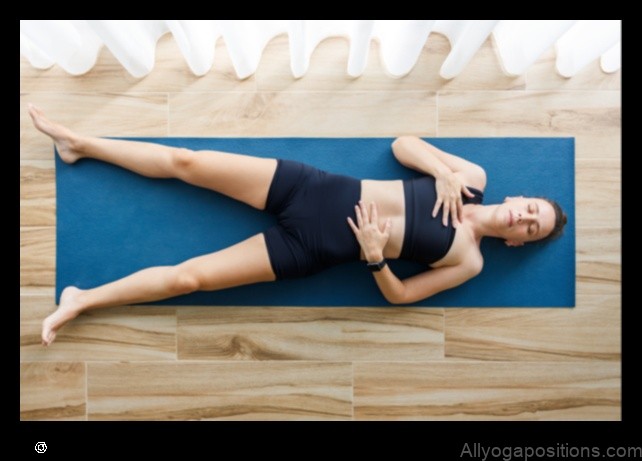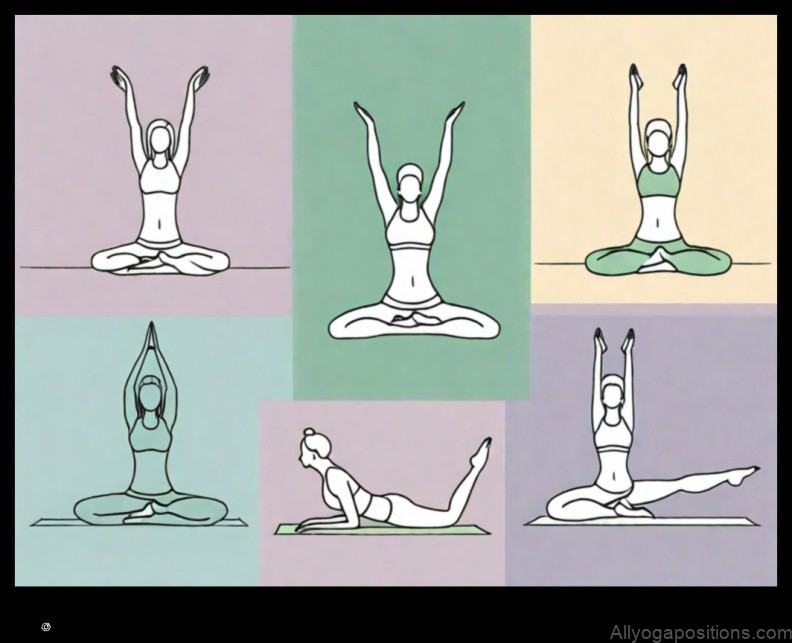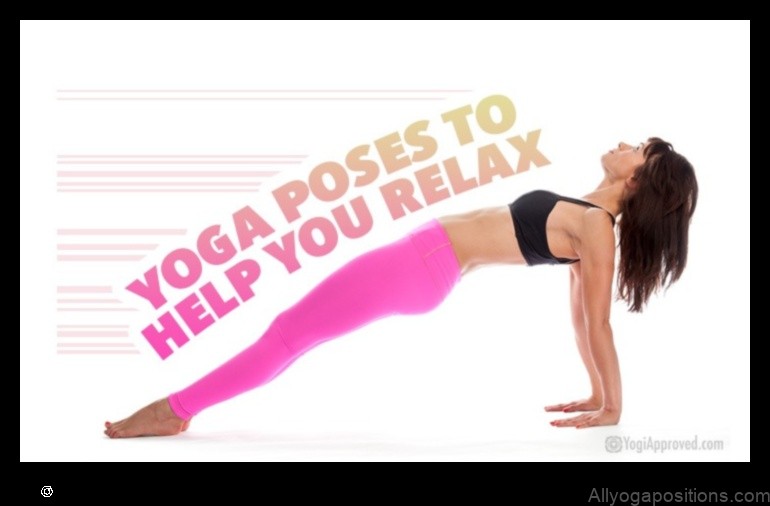
Yoga for Inner Strength: Building Emotional Resilience
Yoga is a mind and body practice that has been shown to have a number of benefits for physical and mental health. It can help to reduce stress, anxiety, and depression, and it can also improve mood, sleep, and energy levels. Yoga can also help to build strength, flexibility, and balance.
In this article, we will discuss the benefits of yoga for emotional resilience. We will also provide tips for practicing yoga for emotional resilience.

What is emotional resilience?
Emotional resilience is the ability to cope with stress and adversity in a healthy way. It is the ability to bounce back from setbacks and to maintain a positive outlook on life.
Emotionally resilient people are able to manage their emotions effectively, and they are able to see challenges as opportunities for growth. They are also able to connect with others and to build strong relationships.
Benefits of yoga for emotional resilience
Yoga can help to improve emotional resilience in a number of ways. It can help to reduce stress, anxiety, and depression. It can also help to improve mood, sleep, and energy levels. Yoga can also help to build strength, flexibility, and balance.
The specific benefits of yoga for emotional resilience include:
- Reduced stress
- Improved mood
- Increased energy levels
- Improved sleep
- Increased strength
- Increased flexibility
- Improved balance
- Increased mindfulness
- Increased self-awareness
- Improved relationships

How to do yoga for emotional resilience
There are many different ways to practice yoga for emotional resilience. You can find a variety of yoga classes and programs that are designed to help you improve your emotional resilience. You can also practice yoga at home on your own.
If you are new to yoga, it is important to start slowly and gradually increase the intensity of your practice. It is also important to find a yoga teacher who is experienced in teaching yoga for emotional resilience.
Some tips for practicing yoga for emotional resilience include:
- Choose a yoga style that is right for you. There are many different types of yoga, so find one that you enjoy and that fits your fitness level.
- Start slowly and gradually increase the intensity of your practice.
- Listen to your body and modify poses as needed.
- Focus on your breath and on the present moment.
- Be patient and allow yourself to grow and change.

Yoga poses for emotional resilience
There are many different yoga poses that can help to improve emotional resilience. Some of the most beneficial poses include:
- Child’s pose
- Cat-cow pose
- Downward-facing dog pose
- Warrior I pose
- Warrior II pose
- Tree pose
- Bridge pose
- Savasana (corpse pose)
These poses can help to improve flexibility, strength, and balance. They can also help to reduce stress, anxiety, and depression.
Yoga breathing exercises for emotional resilience
Yoga breathing exercises can also help to improve emotional resilience. Some of the most beneficial breathing exercises include:
- Ujjayi breath
- Breath of fire
- Alternate nostril breathing
- Diaphragmatic breathing
These breathing exercises can help to calm the mind and body. They can also help to reduce stress, anxiety, and depression.
Yoga meditation for emotional resilience
Yoga meditation can also help to improve emotional resilience. Meditation can help to calm the mind and body. It can also help to increase mindfulness and self-awareness.
Some of the most beneficial meditation practices for emotional resilience include:
- Reduced stress
- Increased mindfulness
- Improved self-awareness
- Increased self-esteem
- Improved mood
- Increased flexibility
- Increased strength
- Improved balance
- Find a yoga class or teacher that specializes in teaching yoga for emotional resilience.
- Start slowly and gradually increase the intensity of your practice as you feel comfortable.
- Listen to your body and modify poses as needed.
- Focus on your breath and mindfulness during your practice.
- Make time for yoga in your daily routine, even if it’s just for a few minutes.
- Child’s pose
- Forward fold
- Warrior pose I
- Warrior pose II
- Tree pose
- Bridge pose
- Savasana
- Pranayama: This is a general term for yoga breathing exercises. There are many different types of pranayama, but some of the most common include:
- Ujjayi breath: This is a deep, diaphragmatic breath that is often used in yoga and meditation. It is said to help to calm the mind and body.
- Breath of fire: This is a rapid, forceful breath that is said to help to energize the body and mind.
- Kapalbhati breath: This is a cleansing breath that is said to help to detoxify the body and mind.
- Breathing meditation: This is a type of meditation that focuses on the breath. It is said to help to improve focus, concentration, and mindfulness.
- Yoga Nidra: This is a deep relaxation technique that is said to help to reduce stress, anxiety, and depression. It is also said to help to improve sleep quality.
- Start slowly and gradually increase the intensity of your practice as you feel comfortable.
- Listen to your body and don’t push yourself too hard.
- Choose poses that are appropriate for your fitness level and that you enjoy.
- Focus on your breath and let go of any thoughts or worries that come up.
- Practice yoga regularly to see the benefits.
- Yoga for Bladder Health 5 Poses to Help You Feel Your Best
- Stress Less, Meditate More 5 Simple Techniques for Relaxation
- Wisdom in Motion Yoga for Inner Insight Discover the ancient practice of yoga and how it can help you achieve greater mindfulness, clarity, and peace of mind.
- Mindful Budgeting How to Achieve Financial Wellness Through Meditation
- Blissful Backbends Yoga for Opening Up Your Body and Mind
| Topic | Features |
|---|---|
| Yoga for inner strength | Reduces stress, anxiety, and depression |
| Emotional resilience | Increases mindfulness and self-awareness |
| Stress management | Builds strength and flexibility |
| Mindfulness | Gives people a sense of control over their bodies and their lives |
| Meditation | Helps people to cope with difficult emotions in a healthy way |
II. What is emotional resilience?
Emotional resilience is the ability to withstand and recover from stress, adversity, and trauma. It is a key component of mental health and well-being. People who are emotionally resilient are able to cope with difficult emotions in a healthy way, and they are able to bounce back from setbacks.
Emotional resilience is not something that people are born with. It is a skill that can be learned and developed through practice. There are a number of things that people can do to improve their emotional resilience, such as yoga, meditation, and mindfulness.
III. Benefits of yoga for emotional resilience
Yoga can have a number of benefits for emotional resilience, including:
Yoga can help to reduce stress by teaching people how to relax and manage their emotions. It can also help to increase mindfulness, which is the ability to pay attention to the present moment without judgment. Mindfulness can help people to become more aware of their thoughts and emotions, and it can help them to cope with stress in a healthy way.
Yoga can also help to improve self-awareness and self-esteem. When people practice yoga, they learn to pay attention to their bodies and their minds. This can help them to develop a better understanding of themselves and their strengths and weaknesses. It can also help them to feel more confident and capable.
Yoga can also help to improve mood and increase flexibility, strength, and balance. When people practice yoga, they are moving their bodies in ways that they may not normally do. This can help to improve their flexibility and strength. It can also help to improve their balance and coordination. Yoga can also help to improve mood by releasing endorphins, which are hormones that have mood-boosting effects.
IV. How to do yoga for emotional resilience
Yoga for emotional resilience can be practiced in a variety of ways. Here are some tips for getting started:
Yoga for emotional resilience can be a powerful tool for improving your mental and emotional health. By practicing yoga regularly, you can learn to manage stress, anxiety, and depression, and you can also increase your sense of well-being and resilience.
V. Yoga poses for emotional resilience
There are many yoga poses that can help to improve emotional resilience. Some of the most beneficial poses include:
These poses can help to improve flexibility, strength, and balance, which can all contribute to emotional resilience. They can also help to reduce stress and anxiety, and to increase mindfulness and self-awareness.
VI. Yoga breathing exercises for emotional resilience
Yoga breathing exercises can help to improve emotional resilience by reducing stress, anxiety, and depression. They can also help to increase mindfulness and self-awareness.
Here are some yoga breathing exercises that you can try:
Yoga breathing exercises can be practiced at any time of day, but they are especially helpful when you are feeling stressed, anxious, or depressed. You can practice them for a few minutes each day, or you can do them for longer periods of time if you have more time.
Yoga breathing exercises are a safe and effective way to improve emotional resilience. They are easy to learn and can be practiced anywhere, making them a great option for people of all ages and abilities.
VII. Yoga meditation for emotional resilience
Yoga meditation is a type of meditation that is practiced in conjunction with yoga poses. It can help to improve emotional resilience by helping to reduce stress, anxiety, and depression. It can also help to increase mindfulness and self-awareness.
To practice yoga meditation, you will need to find a comfortable seated position. You can either sit on a chair or on the floor with your legs crossed. Close your eyes and take a few deep breaths. Once you are relaxed, begin to focus on your breath. Notice the feeling of the air as it flows in and out of your lungs.
As you continue to focus on your breath, bring your attention to your body. Notice any sensations of tension or discomfort. Allow these sensations to be there without judgment. Gently breathe into the areas of tension and let them go.
Continue to focus on your breath and your body for a few minutes. When you are ready, open your eyes and slowly come back to your normal awareness.
Yoga meditation can be practiced for as little as five minutes or for up to an hour. It is a great way to relax and de-stress, and it can also help to improve your emotional resilience.
Tips for practicing yoga for emotional resilience
Here are some tips for practicing yoga for emotional resilience:
Yoga can be a helpful tool for improving emotional resilience, but it is important to remember that it is not a substitute for professional mental health care. If you are struggling with mental health issues, please seek professional help.
IX. Conclusion
Yoga is a powerful tool for improving emotional resilience. It can help to reduce stress, anxiety, and depression, and it can also help to increase mindfulness and self-awareness. Yoga can also help to build strength and flexibility, which can give people a sense of control over their bodies and their lives.
If you are looking for ways to improve your emotional resilience, I encourage you to try yoga. It is a safe and effective way to reduce stress, manage your emotions, and live a happier, healthier life.
Here are some additional resources that you may find helpful:
X. FAQ
Q: What is yoga for inner strength?
Yoga for inner strength is a type of yoga that focuses on building physical, mental, and emotional strength. It can help to improve your flexibility, strength, balance, and coordination. It can also help to reduce stress, anxiety, and depression.
Q: What are the benefits of yoga for emotional resilience?
Yoga can help to improve emotional resilience in a number of ways. It can help to reduce stress, anxiety, and depression. It can also help to increase mindfulness and self-awareness. Yoga can also help to build strength and flexibility, which can give people a sense of control over their bodies and their lives.
Q: How can I do yoga for emotional resilience?
There are many different ways to do yoga for emotional resilience. You can find classes at your local yoga studio or you can practice yoga at home. There are also many online resources available that can help you learn how to do yoga for emotional resilience.
Table of Contents
